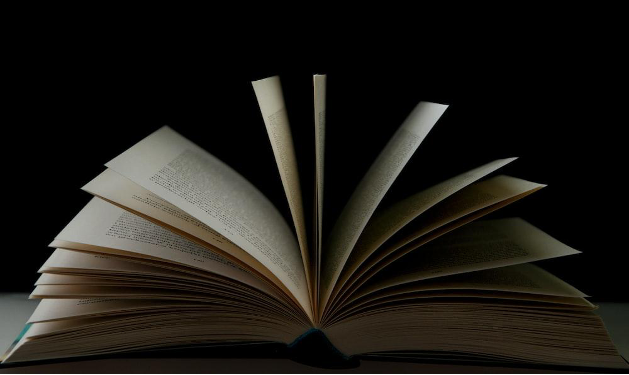On the 20th of April, tens of thousands of people around the United States celebrate marijuana. Worldwide, cannabis and budpop vape consumers look forward to this day as an excuse to gather in large groups and celebrate with pals. Who among the Bloom employees reads and who doesn’t is a topic of heated debate. For those who do, here is an essay written just for you. There are a lot of classic novels that fit the stoner-lit description, and you have to acknowledge that it’s not surprising. Many of them have become classics, and rightfully so.
8 Top-Notch Stoner Books List to Read in 2024
Contents
- 8 Top-Notch Stoner Books List to Read in 2024
- 1. The Gunslinger, by Stephen King
- 2. The Savage Detectives by Roberto Bolano
- 3. 1984, by George Orwell
- 4. Weed: A Connoisseur’s Guide to Cannabis by Ellen Holland
- 5. The Final Empire, by Brandon Sanderson
- 6. Chaos: Charles Manson, the CIA, and the Secret History of the Sixties, by Tom O’Neill
- 7. King Suckerman by George Pelecanos
- 8. Wonder Boys by Michael Chabon
- Conclusion

These are a handful of your favorite stoner novels, perfect for 4/20 and for when you just want to relax with some good reading:
1. The Gunslinger, by Stephen King
In the first installment of this outstanding series, Stephen King presents you with Roland of Gilead, The Last Gunslinger—one of his most mysterious protagonists. An eerie figure, he travels alone on a captivating quest between good and evil.
Roland becomes friends with Jake, a Kid from Earth, follows The Man in Black, and meets an attractive lady named Alice in his barren world, which horrifyingly resembles our own. In equal parts terrifyingly realistic and engrossingly fantastical, The Gunslinger has readers turning pages in anticipation of what happens next.
2. The Savage Detectives by Roberto Bolano

A quest by two young exiles to find a poet they respect is the central plot point of Bolano’s novel that brought him fame on a global scale. Acapulco Gold, a high-quality cannabis product sold to students and artists in Mexico City, helps support the endeavors of two adventurers, Ulises Lima and Arturo Belano (an alias that sometimes appears in Bolano’s writings). Who published the magazine? Known as Lee Harvey Oswald.
3. 1984, by George Orwell
One of the few masterpieces of the twentieth century, Nineteen Eighty-Four becomes all the more eerie when the impending Hell it depicts in the future becomes shape. The novel, which was published in 1949, presents political satire George Orwell’s horrific portrayal of a totalitarian bureaucratic society and the quest for identity by one destitute stiff.
Brilliantly, Orwell foresaw contemporary reality in the book, including the pervasiveness of television and the linguistic distortions that accompany it, and he was able to create such a detailed representation of hell. From the day it came out, students have been required to read what is widely considered to be one of the most horrific books of all time.
4. Weed: A Connoisseur’s Guide to Cannabis by Ellen Holland

Imagine you take cannabis the way you would a fine wine, a healthy meal, or a component of your daily wellness regimen. What do you think happens? Ellen Holland has more knowledge than most people as she is the main editor of High Times Magazine.
She describes the many uses of cannabis, from culinary creations to decorative accents in flower arrangements, and how its many cultivars, terpenes, and terroir contribute to its many desirable properties. If you’re here for the growing methods breakdown, you may as well stick around for the stunning, glossy images that showcase the beauty of cannabis.
5. The Final Empire, by Brandon Sanderson
This book is an entrance to a new kind of magical realm, and it has mainly received positive reviews in a large number of fantasy communities. A thousand years passed with the ash falling and the absence of flower blooms. For a millennium, the Skaa endured unimaginable suffering and terror. The Sliver of Infinity, the Lord Ruler, was utterly fearsome and omnipotent for a thousand years.
But then, in the depths of the Lord Ruler’s most terrible jail, a horribly damaged and heartbroken half-Skaa found it again, long after all hope had faded away. The abilities of a Mistborn suddenly became apparent to Kelsier. As a master thief and born leader, he set his sights on the ultimate con artist, the Lord Ruler.
6. Chaos: Charles Manson, the CIA, and the Secret History of the Sixties, by Tom O’Neill

Indulging in a joint is the ideal opportunity to delve into another person’s twenty-year fixation with an infamous killing spree from the contemporary era. As portrayed in the best-selling novel Helter Skelter, the notorious Manson murders are revisited in Chaos.
Tom O’Neill is dragged into a web of conspiracy theories, including CIA wrongdoing, government cover-ups, and other nefarious dealings, as the story begins with his 1999 assignment to draft a review on those two infamous evenings in Los Angeles. Right up my alley, O’Neill delves into the many conspiracy theories surrounding the Manson killings.
7. King Suckerman by George Pelecanos
As the summer heats up in the nation’s capital, Dimitri Karras, a small-time marijuana dealer, finds a bag full of drug money and must defend himself from a group of insane rurals who want to steal it. (A blaxploitation film that the bad guys really like is the inspiration for the book’s title.) A masterpiece from Pelecanos’s early career, King Suckerman is foggy with genuine ’70s atmospheres, smoke included. Pelecanos is the maestro of clever, real-as-can-be noir in Washington, DC.
8. Wonder Boys by Michael Chabon

Professor Grady Tripp is in the midst of a chaotic existence. His second book has grown into a monster of a thousand pages, he is having an affair with his boss’s wife, and he is gradually coming to terms with the fact that the young writer he has mentored is, despite her immense potential, a bit of a psychopath. Marijuana as a personal treatment? Oh, my goodness! The impending arrival of a father and the realization of his impending catastrophic and irretrievable failure lead him to resign at the conclusion of the book. This is very salvific!
Conclusion
Marijuana celebrations are becoming mainstream and commercial as the movement gains popularity. This means that the cannabis industry is trying to figure out how to make the most of the holiday to boost sales. This places the modern 4/20 in stark contrast to the original, celebrated by the counterculture that opposed materialism, big business, and the status quo, which reveals a lot about the evolution of cannabis in the US post-legalization.


